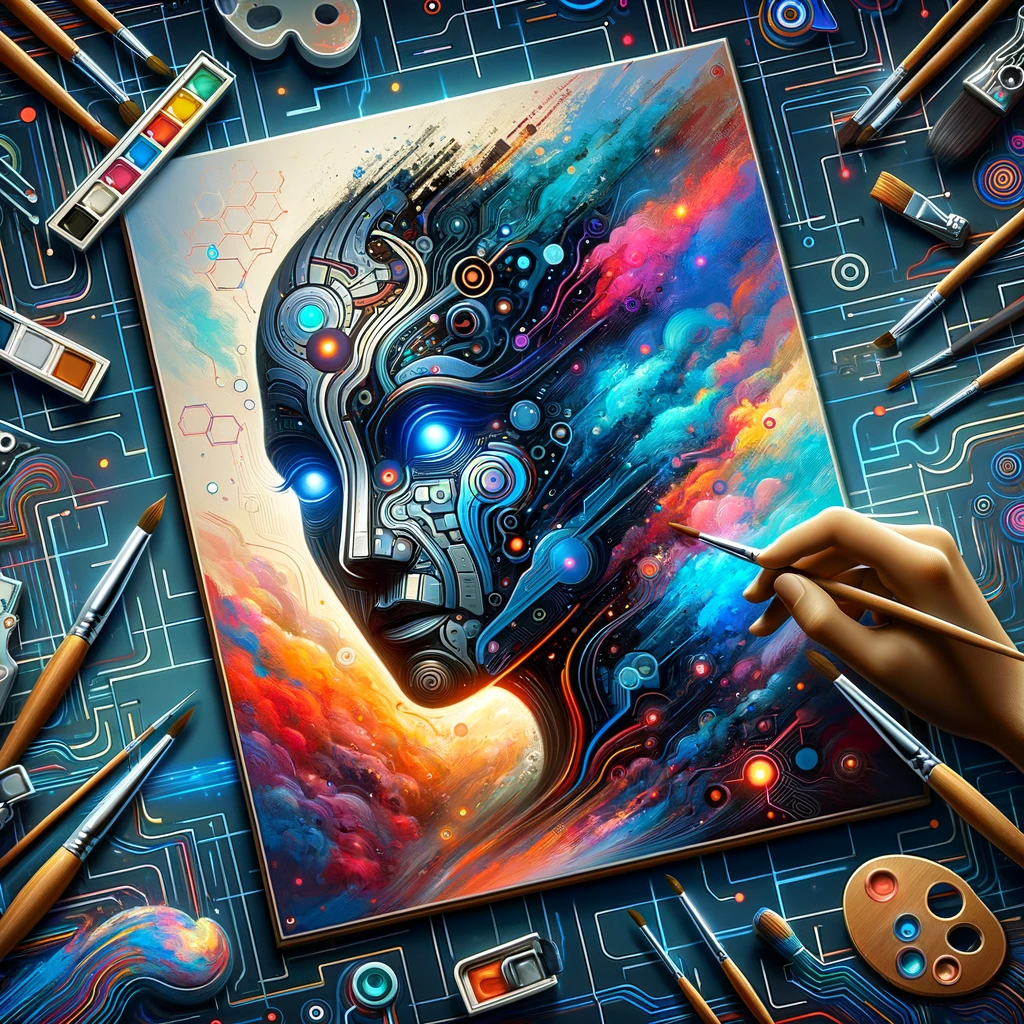In the ever-evolving world of digital art, the rise of artificial intelligence (AI) stands as a monumental shift, opening new frontiers in creativity and expression. Once dominated by traditional tools and human imagination, the digital art landscape is now witnessing a revolution, thanks to AI’s burgeoning role. This article delves into this transformative journey, exploring how AI is reshaping art as we know it.
The Emergence of AI Image Creation
The inception of AI in image creation marks a pivotal chapter in art history. Initially, AI’s role was limited to supporting tools, but rapid advancements in technology have catapulted it to the forefront of creative innovation. Core to this evolution are algorithms like neural networks and machine learning, which enable AI to learn from vast datasets and generate striking visual content.
Impact on Artists and the Art Industry
AI is redefining artists’ roles, offering them novel tools that expand their creative horizons. No longer confined to traditional methods, artists are exploring AI as a collaborator, using it to generate complex patterns and visuals that were previously unimaginable. This synergy has not only led to the emergence of new art forms but has also stirred a debate on the nature of creativity and the essence of human input in art.
The art industry, too, is experiencing a seismic shift. AI-generated art is making its way into galleries and exhibitions, challenging conventional notions of artistry and ownership. The dynamic interplay between AI and artists is spawning new opportunities, such as personalized art experiences and AI-assisted design tasks, while also raising challenges like job displacement and the need for new skills.
Several case studies illustrate this impact. For instance, some contemporary artists have embraced AI to create artworks that blend human emotion with algorithmic complexity, resulting in pieces that are both technically impressive and deeply expressive.
Technical and Creative Advancements
At the heart of AI’s artistic capabilities are its technical and creative advancements. AI algorithms can analyze and emulate styles from various art movements, enabling the creation of pieces that resonate with historical significance yet carry a modern twist. Moreover, AI’s ability to process and reinterpret vast amounts of visual data leads to the creation of entirely new aesthetics.
This fusion of technology and art is not just about replicating existing styles; it’s about creating something wholly original. The blend of human creativity and AI’s computational power has given birth to art that challenges our perception of beauty and narrative.
Ethical and Legal Considerations
As AI reshapes the art world, it also brings forth complex ethical and legal questions. Issues surrounding intellectual property rights are particularly pressing. Determining the ownership of AI-generated art involves navigating a maze of legal frameworks that were not designed with AI in mind.
Furthermore, ethical considerations abound. The use of AI in art raises questions about authenticity and the value of human touch in creative processes. The debate centers on what constitutes ‘true’ art and whether AI-generated pieces can hold the same emotional and cultural weight as human-made creations.
The Future of AI in Art
Looking ahead, the potential of AI in art is boundless. We are likely to see more AI tools becoming accessible to artists and educators, democratizing the creation of art and opening new avenues for artistic expression. AI might also find applications in therapeutic settings, using art to aid in emotional and psychological healing.
The future promises a landscape where AI and human creativity coexist in a symbiotic relationship, continually pushing the boundaries of what art can be.
Conclusion
The integration of AI into the realm of digital art is not just a technological advancement; it’s a cultural and creative revolution. As we stand at this crossroads, it’s clear that AI is not just a tool; it is a catalyst for a new era of artistic expression, challenging our preconceptions and opening up a world of possibilities. In this dance between algorithm and imagination, the future of digital art is bright and unbounded, promising an exciting journey for artists, enthusiasts, and observers alike.
